#medieval cookery
Explore tagged Tumblr posts
Text
The Missing Cauldron Mystery
One of the missing bits of information about early Irish food has been the actual cooking vessels. There's evidence in texts of various things that necessitate cooking pots - porridges and pottages, most notably - but I wasn't clear on what they were actually cooked in. I'm pretty sure my cast iron pots are not accurate; we don't see cast iron at that size until way later in the historical record in general.
My initial assumptions were that there would be ceramic and riveted metal vessels, because that's what you see in the rest of Europe. But when I went about finding some confirmation of this, the very first thing I read said that Ireland essentially had no ceramics worth speaking of. The quote goes: "domestic pottery was not in use in Ireland from the end of the Bronze Age (c. 600 bc) to the eighth century" (Clare McCutcheon and Rosanne Meenan, "Pots on the hearth: domestic pottery in historic Ireland", Proceedings of the Royal Irish Academy: Archaeology, Culture, History, Literature , 2011, Vol. 111C, Special Issue: Domestic life in Ireland (2011), pp. 91-113). And even in the 8th century, the only ceramic cookware is Souterrain Ware, which is kind of crude, and is only found in the most north-easterly bit of the country.
Alright, so. They probably used metal, or even stone vessels, then. There'll be archaeological remnants of those, right? It turns out, no. There are a few cauldrons sitting in museuems in Dublin and Belfast, but for the most part they're undated, having been extracted from wherever they were buried before carbon dating - or even decent stratigraphic dating - was a thing, in the early 1800s. Some of them have labels that say "found in Cork", or "deposited by the Royal Irish Institution" or something similarly unhelpful. They might be early medieval. They might be late medieval - as in, post-Norman. They might be Bronze Age, because apparently there are loads of Bronze Age cooking vessels evident.
There's loads of evidence, too, of wooden stuff - lathe-turned and carved vessels, and stave-built things like buckets, tubs, churns and barrels. But you can't cook in wooden vessels. From a book called Early Medieval Crafts and Production in Ireland, AD 400–1100: The Evidence from Rural Settlements, I have the information that "The presence of soapstone vessels [..] indicates that trade was maintained with Scandinavia and the Scottish islands, particularly in the Viking-Age period.", which is fine, except that's just the last couple of hundred years of a nearly 800 year period, and there just weren't all that many of the soapstone pots.
We know they had cauldrons. They're elements of myth (the Dagda's cauldron, for instance). They're present in metaphor, as in this excellent piece of analysis of 8th-century-or-so poetry from @irish-dress-history. And wait, in that post there's a picture of an 8th-9th century cauldron! Part of the Derrynaflan hoard! Aha! … except that there were, depending on your definitions, between three and five objects in the hoard, and this cauldron/bowl/copper vessel is by far the least written about, because it was basically a cover for the rest before they were buried. As far as I can make out, it's a single piece of copper or copper alloy (maybe bronze, maybe something less clear) which has been beaten into shape.
There's also a reference to a bronze bowl 'of Irish origin' found 'in a 10th-century grave in Kaupang, Vestfold, Norway', and presumed to have been brought there from raiding. There are a few references to bronze 'hanging-bowls', which seem to have been across the Isles in the early medieval. They're very ornamental, and not all that big, but they demonstrate the capability to make large-ish metal bowls. They seem to match with the 7th-8th centuries in Ireland (Lloyd Robert Laing, The Archaeology of Celtic Britain and Ireland: c. AD 400 - 1200, 2006, p. 176.) And from that same book, "a stake used for hammering sheet steel metal vessels has come from Moynagh Lough - it would have been set in a wooden block". And further: "Sheet iron was worked into a variety of objects, the best known of which are bells, which were sometimes plated with copper alloy. Good examples come from Oldcourt, which typically had riveted seams (Murphy, 1961), or one from Birsay (C. Curle, 1982: 50-1). Other sheet iron objects include vessels from Lagore". So big metal riveted things could be made.
At this stage, I've found enough textual references to cauldrons, and enough archaeological evidence to convince me that the technology to make them (in riveted metal; copper or bronze, or possibly iron) existed. There really don't seem to be any reliably dated early medieval cauldrons, which I'm not happy about. But my reasoning is that cauldrons were big, and valuable. With the exception of those used to hide even more valuable items, or taken away by raiders, it's very likely that they were used, with repairs, until they couldn't be used anymore, and were then melted down and re-made. It's hard to lose a cauldron, I feel. They're too big to drop in mud or into the cracks of a wall, and unlike the wooden vessels, too valued to be casually disposed of. So most of the ways in which objects end up being found archaeologically just weren't going to happen. I'll keep an eye out for some, all the same. Maybe a visit to some of the museums will shake a few loose, even if they haven't been much written about.
Next step: acquire a riveted metal cauldron to cook in.
#sca#medieval cooking#medieval irish cooking#irish food#medieval cookery#medieval food#food history#medieval#ireland#cauldrons
33 notes
·
View notes
Text
Roman legions ate huge amounts of various carbs, and various amounts of lard, cheese, porridge and wine, with other food groups mostly being a rarity. The cathedrals were built on a diet of mostly wheat products like bread and pasta, cheese, spices, beer and fish. The Mesopotamians loved carbs so much they made a society about it.
Literally every single great ancient achievement was built on carbs. Go make some 14th century pasta.
Take some noodles, and melt a bunch of butter on them. Add plenty of cheese (anything you like, really. You can do really well with fresh grated Parmesan) and add a blend of mostly cinnamon, with powdered ginger, cloves, nutmeg, and pipli (you might know this as long pepper, you should be able to find it at an Indian grocery store) to taste. As much or as little as you like. You’ll need to take some time to figure out what proportions of spices you like, but this is a very typical medieval European blend. You should probably prepare all the cheese and spices ahead because you’ll want to toss the noodles with the cheese and spices while it’s still really hot. Serve it with a little more cheese and spices on top.
Carbs are fucking awesome. I love you, carbs
carbs are my best friends actually. i love rice and pasta and potato and bread and i don’t think “evil food” exists
59K notes
·
View notes
Text

This is an interesting book
1 note
·
View note
Text



𝔗𝔞𝔨𝔢 𝔞𝔫𝔡 𝔰𝔪𝔶𝔱𝔢 𝔣𝔞𝔦𝔯𝔢 𝔟𝔲𝔱𝔱𝔢𝔰 𝔬𝔣 𝔭𝔬𝔯𝔨𝔢 𝔞𝔫𝔡 𝔭𝔲𝔱 𝔥𝔦𝔱 𝔦𝔫 𝔞 𝔣𝔞𝔦𝔯𝔢 𝔭𝔬𝔱𝔱𝔢, 𝔞𝔫𝔡 𝔭𝔲𝔱𝔱𝔢 𝔱𝔥𝔢𝔯𝔢𝔱𝔬 𝔣𝔞𝔦𝔯𝔢 𝔟𝔯𝔬𝔱𝔥, 𝔞𝔫𝔡 𝔞 𝔮𝔲𝔞𝔫𝔱𝔦𝔱𝔢 𝔬𝔣 𝔚𝔶𝔫𝔢 𝔞𝔫𝔡 𝔩𝔢𝔱𝔢 𝔞𝔩𝔩 𝔟𝔬𝔦𝔩𝔢 𝔱𝔬𝔤𝔢𝔡𝔦𝔡𝔯𝔢 𝔱𝔦𝔩 𝔥𝔦𝔱 𝔟𝔢 𝔶𝔫𝔬𝔤𝔥; 𝔞𝔫𝔡 þ𝔢𝔫 𝔱𝔞𝔨𝔢 𝔥𝔦𝔱 𝔣𝔯𝔬 𝔱𝔥𝔢 𝔣𝔦𝔯𝔢 𝔞𝔫𝔡 𝔩𝔢𝔱𝔢 𝔨𝔢𝔩𝔢 𝔞 𝔩𝔦𝔱𝔢𝔩, 𝔞𝔫𝔡 𝔠𝔞𝔰𝔱 𝔱𝔥𝔢𝔯-𝔱𝔬 𝔯𝔬𝔴 𝔶𝔬𝔩𝔨𝔢𝔰 𝔬𝔣 𝔢𝔶𝔯𝔢𝔫, 𝔞𝔫𝔡 𝔭𝔬𝔲𝔲𝔡𝔯𝔢 𝔬𝔣 𝔤𝔶𝔫𝔤𝔢𝔲𝔢𝔯𝔢, 𝔰𝔲𝔤𝔯𝔢 𝔞𝔫𝔡 𝔰𝔞𝔩𝔱, 𝔞𝔫𝔡 𝔪𝔶𝔫𝔠𝔢𝔡 𝔡𝔞𝔱𝔢𝔰, 𝔯𝔢𝔰𝔶𝔫𝔰 𝔬𝔣 𝔠𝔬𝔯𝔢𝔫𝔠𝔢; 𝔪𝔞𝔨𝔢 𝔱𝔥𝔢𝔫 𝔠𝔬𝔣𝔣𝔶𝔫𝔰 𝔬𝔣 𝔣𝔢𝔶𝔯𝔢 𝔭𝔞𝔰𝔱 𝔞𝔫𝔡 𝔡𝔬 𝔦𝔱 𝔱���𝔢𝔯-𝔶𝔫𝔫𝔢, 𝔞𝔫𝔡 𝔨𝔢𝔲𝔯𝔢 𝔦𝔱 𝔞𝔫𝔡 𝔩𝔢𝔱𝔢 𝔟𝔞𝔨𝔢 𝔶𝔫𝔬𝔤𝔥. --From Pleyn Delit by Constance B. Hieatt & Sharon Butler
SO, it’s been ages since I’ve taken the time to actually write out a new recipe. I’d say I haven’t had the time but since I left the regular workforce five years ago, I’ve technically had more time? But when you’re home all day there’s so much to do—keeping house, making meals, watching an endless stream of movies (heehee)...there’s always something to pop in the oven or wipe down or put away. I love it, actually, especially compared to commuting 1.5 hours one way—but I think I need to carve out time to do more things that are creatively fulfilling? I deleted tiktok off my phone to remove that temptation and yesterday I made a pretty labor-intensive pie for the first time in forever. A new pie! Not one I’ve made a thousand times! I wish I’d taken more pictures throughout the process, but it took most of the day and after a while I was just gettin’ through it.
I started with the pie crust dough—foolishly I thought I’d get it done early and get to the rest later (wrong! I started between 3 & 4 PM and didn’t leave the kitchen until 9)
Medieval Pie Crust
𝔗𝔞𝔨𝔢 𝔣𝔦𝔫𝔢 𝔣𝔩𝔬𝔲𝔯𝔢 𝔞𝔫𝔡 𝔞 𝔠𝔲𝔯𝔱𝔢𝔰𝔶 𝔬𝔣 𝔣𝔞𝔦𝔯𝔢 𝔴𝔞𝔱𝔢𝔯 𝔞𝔫𝔡 𝔞 𝔡𝔦𝔰𝔰𝔥𝔢 𝔬𝔣 𝔰𝔴𝔢𝔱𝔢 𝔟𝔲𝔱𝔱𝔢𝔯 𝔞𝔫𝔡 𝔞 𝔩𝔦𝔱𝔩𝔢 𝔰𝔞𝔣𝔣𝔯𝔬𝔫 𝔞𝔫𝔡 𝔱𝔥𝔢 𝔶𝔬𝔩𝔨𝔢𝔰 𝔬𝔣 𝔱𝔴𝔬 𝔢𝔤𝔤𝔢𝔰 𝔞𝔫𝔡 𝔪𝔞𝔨𝔢 𝔦𝔱 𝔱𝔥𝔢𝔫 𝔞𝔫𝔡 𝔱𝔢𝔫𝔡𝔢𝔯 𝔞𝔰 𝔶𝔢 𝔪𝔞𝔦𝔢. --A Proper New Booke of Cookery
3 cups flour
½ cup butter (1 stick)
1 tsp kosher salt
2 egg yolks, lightly beaten (save the whites for brushing!!)
½ cup cold water
Pinch of saffron
Crumble the saffron into the water and set aside. Rub the butter into the flour with your fingers until there are only crumb-sized pieces of butter left (you might also use a pastry cutter for this but it is not necessary), then add the salt, egg yolks, and the saffron water. Mix until entirely incorporated and the dough has become smooth. You may need to add more water very gradually until it comes together. If it’s too sticky, more flour.
Divide the dough into two even portions and, on a floured surface, roll them very thin. Thinner than that. THIN, I TELL YOU! (I hate this part)
Line a lightly buttered pie plate with one of your dough circles, pressing it along all the edges. Then use a fork to poke holes all over the bottom of the pastry shell. Place this aside while you start on your filling. Place your other rolled out dough in the freezer on a baking sheet if you plan on cutting out intricate designs—if you don’t, just pop it in the fridge.
*Note: You might also use lard in place of butter here, which is what I usually do when making meat pies, but I felt like having a buttery flakey crust.
So, the filling—as indicated above, I had a medieval pork pie in mind. BUT I’ve made historically accurate pork pies so many times that frankly it’s gotten boring. Last week I was feeling very inspired to try making classic French dishes after listening to Ina Garten’s memoir and the Pork Bourguignon was fresh in my mind. I wanted to make a pie, I wanted to eat that again—it just made sense. SO, to turn Pork Bourguignon into a vaguely medieval meat pie:
Ingredients:
3-4 strips thick cut bacon, diced
2 lbs of nice fatty pork butt, cut into 1-2 inch bitesized-ish pieces
2 Tbsp butter
2 Tbsp flour
1 enormous sweet onion, chopped bigly—I like big chunks of onion but you can dice it if you prefer
8 oz button mushrooms, diced (I remove the stems. Texture issue. But they are perfectly edible.)
2 large stalks of celery, diced
2 cups (ish) of carrots, sliced, carrots are so wildly sized—I let my heart determine how many carrots looks like enough
A handful of golden potatoes, chopped. Perhaps about a cup and a half- two cups here as well
4 fat cloves of garlic, minced (or more)
½ Tbsp dried thyme
1 tsp smoked paprika
Fresh ground pepper
1 tsp kosher salt (to start)
½ cup red wine
1 Tbsp tomato paste
1-2 cups chicken broth (or vegetable, whatever you prefer)
¼ cup heavy cream
Preheat your oven to 350F.
In a large dutch oven pot over medium high heat, cook the bacon completely, then remove and set aside in a large bowl. In the bacon grease, sear the pork on each side—2 minutes or so per side if it’s immediately sizzling when you place the meat in the pot. You may need to do it in batches, don’t crowd the pieces. Once seared on each side, remove from the pot and set it aside in the bowl with the bacon.
To the pot with the juices from the meat, melt 2 Tbsp of butter. When the butter has melted and has stopped foaming, stir in the 2 Tbsp of flour to make your roux. Stir and cook the roux until it turns a deep brown color somewhere between a dark amber and a milk chocolate. Do not walk away from the roux and don’t stop stirring, if the roux burns, you’ll have to clean it out and start over!
Once your roux is a lovely shade of brown, turn the heat down to medium/low and add the onions. Give them about a minute or two head start, stirring them to coat them in the roux then follow with the mushrooms. Cook these together, stirring often, until the onions become translucent and the mushrooms are releasing their moisture.
Add in the celery, carrots, potatoes—stir to incorporate. Allow this to cook for a minute then add in the garlic, thyme, paprika, salt & pepper. After a minute or two, when the garlic and herbs are smelling delicious, stir in the red wine to deglaze the pot, scraping any stuck on bits off the bottom. Allow the wine to boil and reduce by about half then stir in the tomato paste.
Once it is all incorporated, add the bacon and pork back into the pot and stir in the broth. As much as is needed for everything in the pot to be half submerged, you don’t want it to be too soupy, but you also don’t want it to get too dry during the braising. This would be a great place to have a photo. Let’s just say half submerged.
Put the lid on and pop it into the oven for an hour. Check on it at this point, if it’s looking too dry you can add more broth. If it’s looking too much like soup, leave the lid askew a bit to let some of the liquid evaporate. Return to the oven for another hour, checking on it now and then to stir and mind the liquid level.
Remove the pot from the oven and check the internal temperature of the pork—it should be at least 145F and will continue to cook in the pie.
Allow your filling to cool slightly, stir in the heavy cream, taste to see if your filling is salty enough—potatoes soak up salt crazy style—then fill your prepared pie shell. Cover with the top crust, cutting a few holes for venting steam. Crimp the edges (better than I have done here) and bush it all over with egg whites for browning.
Place your pie in the oven for 30 minutes at 350F. After 30 minutes, check to see how it is browning—if it’s getting too dark, tent the pie with foil before returning it to the oven for 10-15 minutes. If it’s still looking quite light, turn the heat up to 400F and return to the oven for 10 minutes.
Remove from the oven and allow the pie to cool slightly to set up a bit before serving.

#meat pie#medieval#cookery#pie#recipe#recipes#my recipes#pork#kitchen witch#cottagecore#grandmacore#grannycore#grandparentcore#warm and cozy#witchblr#aesthetic#hobbitcore#cozy#rabbit#snail#food#meat#hagcore#cronecore#pie art#pi day#goblincore#cryptidcore#hygge#dark
171 notes
·
View notes
Text
i rly wanna get into historical cooking/history of food, esp ancient cooking, medieval cooking, n historical jewish cooking. does anyone have any tips? where to look? what to read? ty 🙏
#mine*#currently abt to download all the books recommended on the medieval cookerh#*cookery#blorbo from my degree....
44 notes
·
View notes
Note
I’m rereading Three Silvers (Priceless), and Eskel teaching Lambert how to read is making me think: if we’re assuming that Common is written like English, surely Lambert had something (a very profane something) to say about all the vagaries of phonics. silent letters, “-ough” words, I before E except all the times it isn’t, etc. Because Lambert likes things that make SENSE and what do you MEAN “enough” has all those useless extra letters thrown on the end??
I've been assuming that they're using standard medieval spelling rules - that is to say, "Eh, looks close enough!"
Which probably infuriates Lambert, to be fair.
The recipe he tries to use for the sweet bread with caraway seeds is actually a 17th century recipe from the Gode Cookery website, and goes:
"Take one pound of good loaf-sugar, and one pound of very fine flower, and one spoon-ful of Carraway-seeds, and mingle them together, then take six new laid egges, and take out of them one yolk or two according as they are in bignesse, then beat the egges first by themselves, then put them to the flower and sugar, and with a pestle beat it wonderfully for two houres, and when you are ready to set it into the Oven, strow a little fine beaten sugar upon it, to make it Glase, then butter the Plaits, and put it into your Oven being hot, as it is for Manchet."
Which as you can see involves neither consistent modern spelling nor, in fact, useful measurements.
61 notes
·
View notes
Text
To celebrate beating darkest dungeon 2 I have once again decided to be needlessly fancy and make a few medieval recipes



And once again the recipes are FANTASTIC. A "roasted" salmon with wine sauce from two fifteenth century cookery books and fried apricot pastries!
(and of course the ale bread)
The pastries were supposed to be fig pastries but the four different stores I checked for them were barren and apricots were the internets suggested substitute. They slap regardless. Book suggests eating them warm with honey and the book is CORRECT.
Gonna try grilling the salmon next time cause i think a lil bit a char will go amazing with the savory fish and the sweet onions (an already insane combo with a bit of cinnamon and ginger i love it!!!!)
And as an aside, apparently both were good recipes for lent, which is insane cause these recipes are too good for a holiday where youre supposed to give good shit up.
#darkest dungeon#darkest dungeon 2#ehhh for posterirty's sake#dd2 bitching#dedicated in part to the 50 some people who thinm i was annoying/stupid/a bitch for being right about how bad this game is#including the ones i see in my notes 👋#yall owe me an apology it did not get better lol#otherwise dedicated to everyone else who watched me bumblequeen my way through not just 2 but#the whole series lol#and everyone who ever tried and failed#i believe in you if i can do it anyone can
17 notes
·
View notes
Text
Books I Wish to Read in the Coming Year
Not specifically da related, but I was tagged by @pinayelf and all my planned reading is da adjacent lol
They aren't novels but I think they still count! Naturally given my Thedas Cookery project they're all cookbook or cooking related haha.
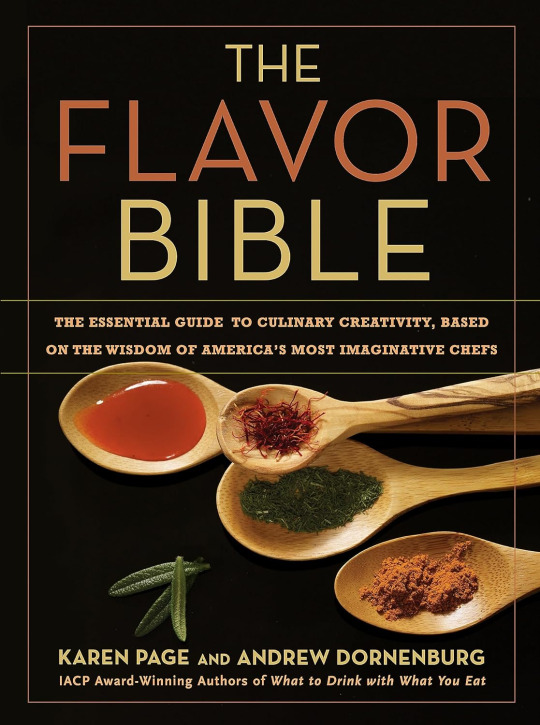



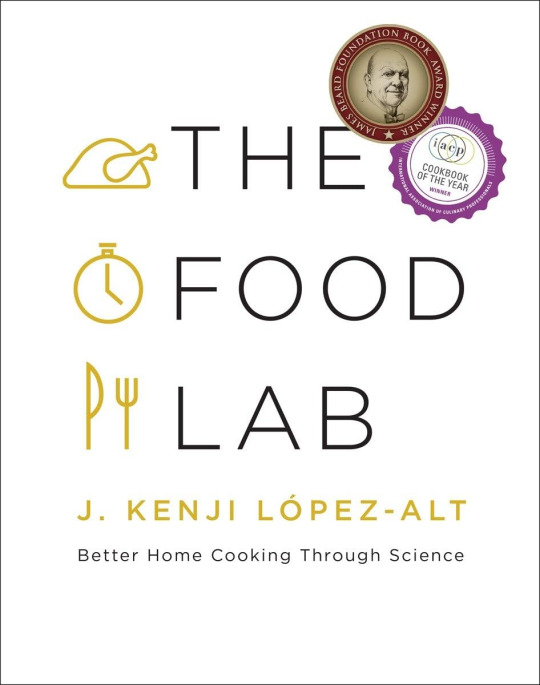
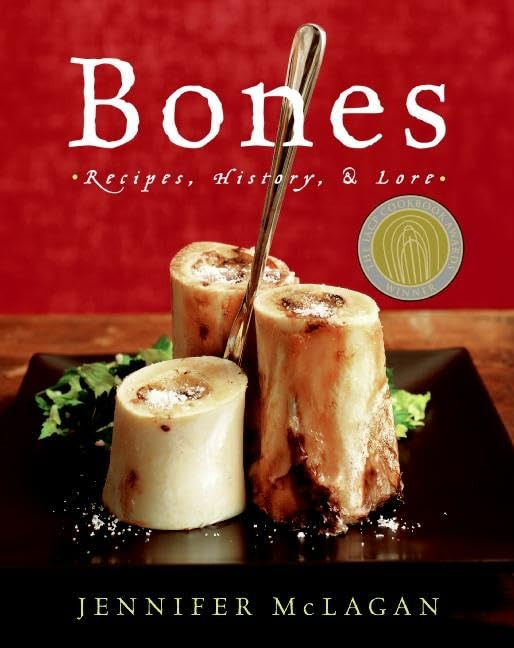
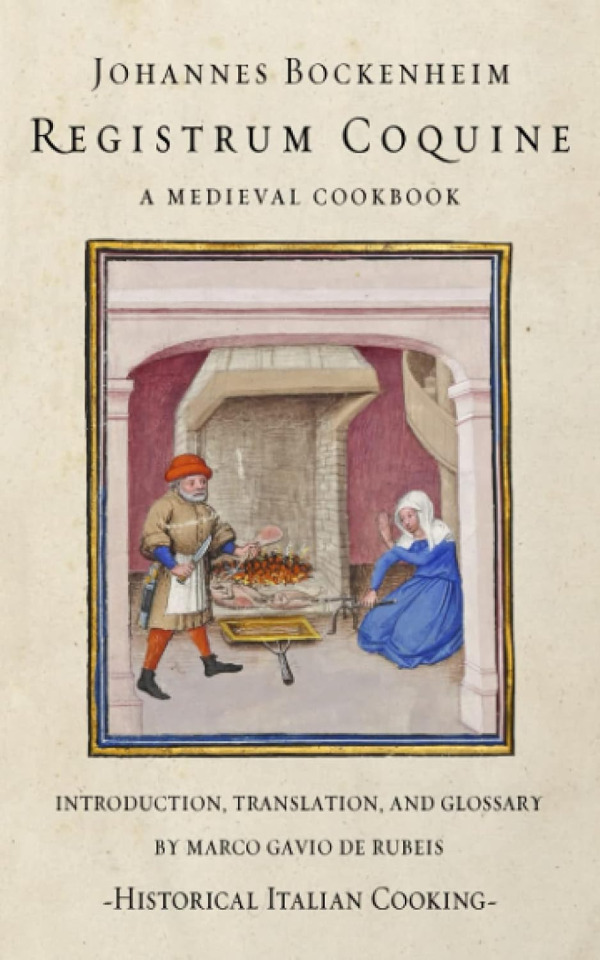
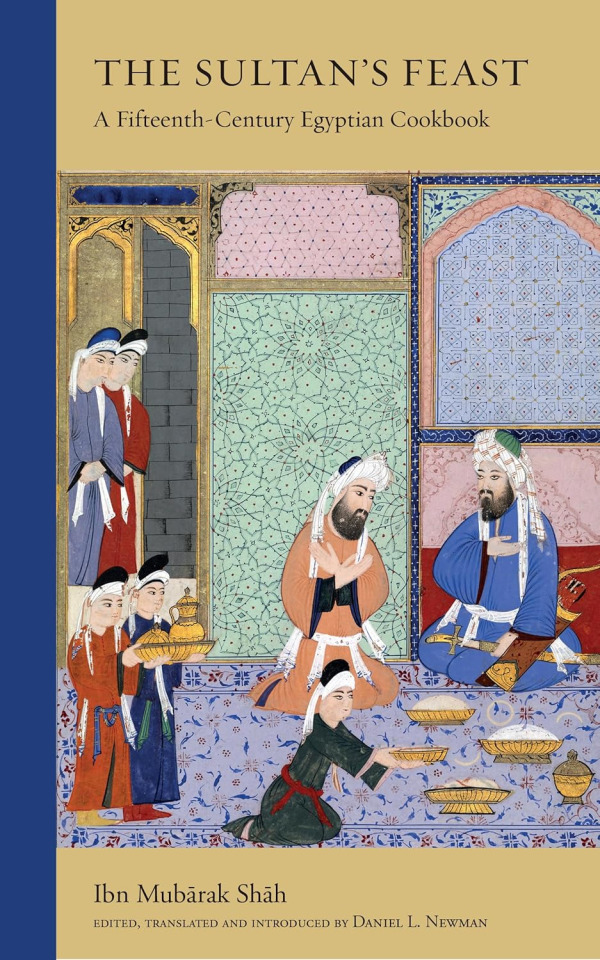
Above is a list of books:
The Flavor Bible by Karen Page and Andrew Dornenburg
The Vegetarian Flavor Bible by Karen Page
The Flavor Matrix by James Briscione
Salt Fat Acid Heat by Samin Nosrat and art by Wendy MacNaughton
The Food Lab by J. Kenji López-alt
Bones: Recipes, History, and Lore by Jennifer McLagan
Registrum Coquine: A Medieval Cookbook: Historical Italian Cooking by Johannes Bockenheim, Introduction, Translation, and Glossary by Marco Gavio De Runeis
The Sultan's Feast: A Fifteenth-Century Egyptian Cookbook by Ibn Mubārak Shāh, Edited, Translated, and Introduced by Daniel L. Newman
I already have Salt Fat Acid Heat and The Food Lab, so I'm going to start there. I'm looking forward to them breaking down a lot of the theory/science behind cooking. I grew up with a mom for a chef so a lot of the stuff I know, I know through her and its less "we do this cause x".
Which has already gotten me tripped up a couple of times when writing recipes because I haven't thought to mention it (luckily my friends testing and trying things out have caught the "I think this is common knowledge so I didn't mention it" moments) haha.
The Flavor Bibles and Flavor Matrix books I'm looking forward to reading because it will definitely help with me figuring out flavour combinations when I'm drafting/brainstorming recipes.
I'm really looking forward to the Bones book if I can get my hands on it because it looks like it will give me some really good ideas and build on knowledge I already have, Think it would be really good for Fereldan, Avvar, Chasind, and Dalish recipes to be honest.
Registrum Coquine and The Sultan's Feast are cookbooks I've had on my wishlist for years now. I want to try and push for them this year because I'm drawing from a lot of historical flavour combinations and recipes and these are really helpful. I have a book similar to them, its called Scents and Flavors: A Syrian Cookbook. Its been really educational and inspirational. And the notations and translation notes are super helpful in figuring out context and purpose.
Tagging @whoisnotmyname @haunteddollco and uh... anyone else who would like to share potential reading lists. No pressure if this stuff isn't your jam or anything! (I don't know which mutuals are cool with me tagging them sorry 😂)
17 notes
·
View notes
Text
i feel like in bbc merlin fics, arthur is always eating cold meat and cheese (with bread if he’s lucky). i understand it was a common meal for nobles, and they didn’t have like paninis in the middle ages, but good god get that man some stew or something. he’s a grown man surviving solely on lunchables.
here! this website has recipes and genuine feast menus from medieval europe, for your use and inspiration
7 notes
·
View notes
Text
Finnish Agricultural Museums & Early Medieval Irish Material Culture
I'm still in Finland after Cudgel War, and today we visited two agricultural museums. Well, one was a dedicated agricultural museum, and the other was a well-preserved farm complex from the mid-1800s. One of the things that's noticeable about food in Finland is that a lot of it is medieval-plausible, and it turns out that much of the stuff used on farms and in daily life up to what the Isles would call the Victorian Era is pretty similar. The Finns don't believe, as far as I can see, in changing something that works.
The effect of this, just after I've done a deep dive into Early Medieval Irish Material Culture (including the lack of cooking vessels) is that I found myself staring at a shelf of wooden items going "lathe-turned, check, carved, check, stave-built, check...". The stuff made from birch bark isn't known to me in Irish archaeology, but I haven't been looking for it yet either.


So the end effect is that nearly everything in these two pictures (both from Sarka) is plausible for Early Medieval Irish. In the first picture, almost everything is wooden. The second object from the left on the top shelf is described as "a ceramic pot covered in birch bark", which was used for souring milk in Karelia, and as I've found, ceramics weren't much used in the Irish early medieval. In the second picture, the grinding device on the top left of the shelves wouldn't be accurate, and the metal three-legged pot on the bottom right likewise. Everything else is, pretty much. And amusingly, that pot was the only cooking vessel in the whole museum.
I've taken lots more pictures, and I'm going to have to learn to do enough woodcarving to make carved vessels. It doesn't look too hard; I've done a few whittled handles for pans and knives before, which looks about the same level. The stave-built stuff may have to wait a bit; it feels like that's a more complex set of tasks.
It's honestly a little weird to be reading about a specific set of vessels in one era in one country on Thursday, and on Friday to see them on display for an entirely different time and place!
#medieval cookery#food history#irish medieval food#finland#finnish agricultural history#finnish food#medieval#lathe-turned#carved ware#stave-built ware#wooden implements
23 notes
·
View notes
Text
Christmas pudding [...] [is] a boiled mass of suet - a raw, hard animal fat [...] often replaced with a vegetarian alternative - as well as flour and dried fruits that is often soaked in alcohol and set alight. [...] [I]t is a legacy of the British Empire with ingredients from around the globe it once dominated [...].
Christmas pudding is a relatively recent concoction of two older, at least medieval, dishes. [...] “Figgy pudding,” immortalized in the “We Wish You a Merry Christmas” carol, appeared in the written record by the 14th century. [...] During the 18th century, the two ["plum pottage" and "figgy pudding"] crossed to become the more familiar plum pudding – a steamed pudding packed with the ingredients of the rapidly growing British Empire of rule and trade. The key was less a new form of cookery than the availability of once-luxury ingredients, including French brandy, raisins from the Mediterranean, and citrus from the Caribbean.
Few things had become more affordable than cane sugar which, owing to the labors of millions of enslaved Africans, could be found in the poorest and remotest of British households by mid-century. Cheap sugar, combined with wider availability of other sweet ingredients like citrus and dried fruits, made plum pudding an iconically British celebratory treat, albeit not yet exclusively associated with Christmas.
Such was its popularity that English satirist James Gillray made it the centerpiece of one of his famous cartoons, depicting Napoleon Bonaparte and the British prime minister carving the world in pudding form.

In line with other modern Christmas celebrations, the Victorians took the plum pudding and redefined it [...], making it the “Christmas pudding.” In his 1843 internationally celebrated “A Christmas Carol,” Charles Dickens venerated the dish as the idealized center of any family’s Christmas feast [...].
Three years later, Queen Victoria’s chef published her favored recipe, making Christmas pudding, like the Christmas tree, the aspiration of families across Britain.
Christmas pudding owed much of its lasting appeal to its socioeconomic accessibility. Victoria’s recipe, which became a classic, included candied citrus peel, nutmeg, cinnamon, lemons, cloves, brandy and a small mountain of raisins and currants – all affordable treats for the middle class. Those with less means could either opt for lesser amounts or substitutions [...]. Eliza Acton, a leading cookbook author of the day who helped to rebrand plum pudding as Christmas pudding, offered a particularly frugal recipe that relied on potatoes and carrots. [...] The high alcohol content gave the puddings a shelf life of a year or more, allowing them to be sent even to the empire’s frontiers during Victoria’s reign [...].
---
In the 1920s, the British Women’s Patriotic League heavily promoted it – calling it “Empire Pudding” in a global marketing campaign. They praised it as emblem of the empire that should be made from the ingredients of Britain’s colonies and possessions: dried fruits from Australia and South Africa, cinnamon from Ceylon, spices from India and Jamaican rum in place of French brandy.
Press coverage of London’s 1926 Empire Day celebrations featured the empire’s representatives pouring the ingredients into a ceremonial mixing bowl and collectively stirring it.
The following year, the Empire Marketing Board received King George V’s permission to promote the royal recipe, which had all the appropriate empire-sourced ingredients. Such promotional recipes and the mass production of puddings from iconic grocery stores like [Sains-bury's] in the 1920s combined to place Christmas puddings on the tables [...].
---
All text above by: Troy Bickham. "How the Christmas pudding, with ingredients taken from the colonies, became an iconic British food." The Conversation. 8 December 2023. [Bold emphasis and some paragraph breaks/contractions added by me. Image and caption shown unaltered as they appear published by Bickham along with the article's text.]
55 notes
·
View notes
Text
Treya is a comforting dish with a long history that deserves a revival. It’s essentially yet another version of the universally loved pasta with chicken, but what is so wonderful and unique about this dish is that it has been traced back to a thirteenth-century medieval Syrian cookbook.
Prolific Jewish food writer Claudia Roden made the discovery when she was researching medieval cookery. She was astonished to find the recipe, as her father’s family also made this dish in Egypt, as well as her aunt Regine from Aleppo, Syria, and a friend of hers from Beirut, Lebanon. Roden saw it as proof of the Jewish people’s long history in the Middle East; a testimony not only to the lasting legacy of home cookbooks, but the migration of the Jewish people.
When we think of Jewish food, we often focus on the big Shabbat dishes, or beautifully adorned festive food, but it is the comforting mid-week meals that mothers have been throwing together while raising children for hundreds of years that are often overlooked.
In Morocco, n’treya is traditionally a Yom Kippur pre-fast dish of chicken, onions and pasta, served with candied eggplant and a rich apricot sauce called mishmishiya. Some have associated treya with macaroni hamin, a Shabbat dish from Jerusalem’s Sephardi community that was traditionally cooked overnight in the baker’s oven before being picked up on the way back from synagogue on a Shabbat morning.
Treya, however, isn’t slow-cooked; in fact, it comes together in 40 minutes, making it the perfect weeknight meal. On cold winter days, I’m always looking for warming comfort food to nourish my family, and this easy recipe certainly fits the bill. With fussy children to cook for, I know that a variation on the familiar flavors of pasta, chicken and much-loved chicken soup will be a hit. Cooking the chicken with spices in water before adding the pasta creates a fragrant chicken broth, which imparts its flavor deep within the pasta.
I hope you’ll make this for your family, and that treya will still be served in homes in another 400 years.
12 notes
·
View notes
Text
Finally finished the hobby magazine portion of my magazine default!
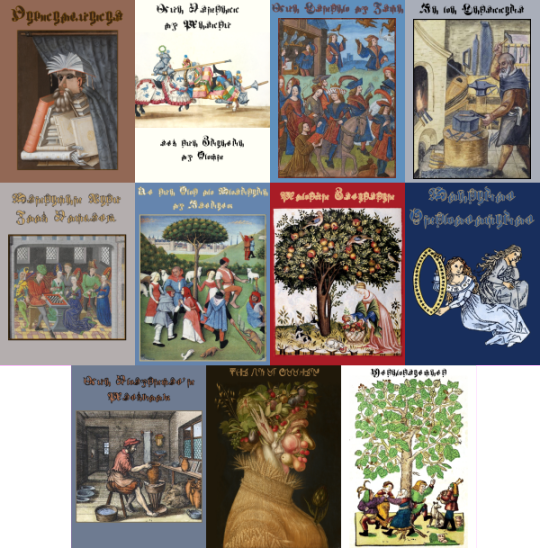
In several instances, I went further into the 16th century than anything I used in the basegame/OFB magazines. Three magazines have covers dating to roughly 1560-1570, and the culinary magazine has interior content from that era as well. You might notice there are 11 covers up there but only 10 hobbies; in the game there's a texture for an "Entertainment" magazine that was never used, but I went ahead and replaced it for anyone who has a mod that reenables that.
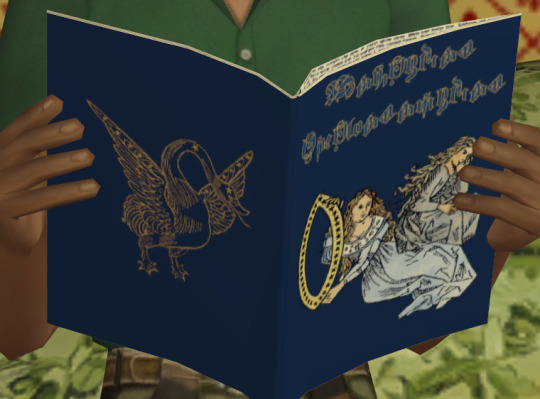
Science ended up being astronomy, and it's made entirely using images from the Poeticon Astronomicon Star Atlas from 1482. Although the images used in the magazine itself are fine, the link there is mildly NSFW, with classical nudity in sometimes surprising places (for instance, Andromeda appears to have a penis, which is not the version of the myth I'm familiar with...) The magazine title is taken directly from the work it's based on.
The rest are behind the cut!
Sports is focused on hunting, which wasn't my original intention, but I found a really striking image of people going hawking that I wanted to use for the front cover and I rolled with it.
Fitness is supposed to be about exercise and health more generally, and I originally planned to aim it at non-aristocratic readers, but then I found a jousting image I wanted to use for the cover. Oops. The jousting cover image is one of the 16th-century works I used.

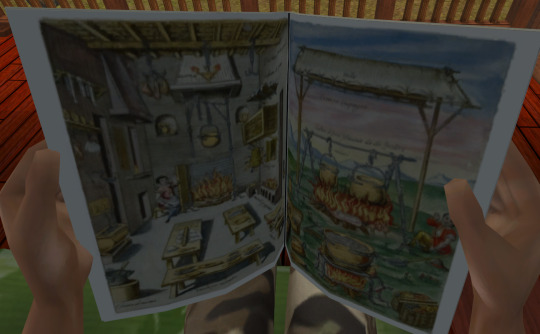
Matthew and Jessica Picaso did the testing for me this time.
Cuisine is another later-Renaissance appearance; the cover is a painting by Giuseppe Arcimboldo from 1563, and the interior pages are illustrations from a book by Bartolomeo Scappi, who's often described as the first celebrity chef, and whose book was first published in 1570. I don't think it's clear enough to read but I did leave the Italian labels in the images alone. The title, "On Cookery," is from an unrelated medieval cookbook.
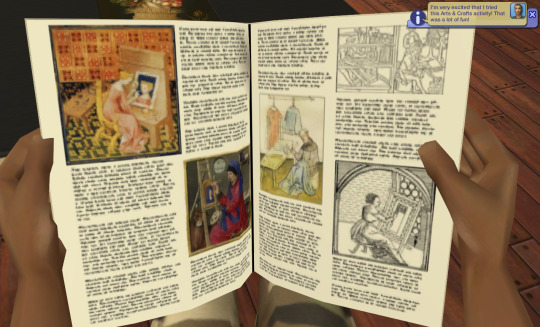
Good for you, Matthew. One of the artists featured in the arts & crafts magazine (the woman drawing a self-portrait on the inside, and sculpting on the back cover) is Iaia of Cyzicus, also known in medieval works as Marcia Varronis, who turns up in a lot of medieval art because she was in a work of Bocaccio's. She's also pretty visible on the modern internet because we all get excited about these medieval illustrations of a woman actively creating artwork.
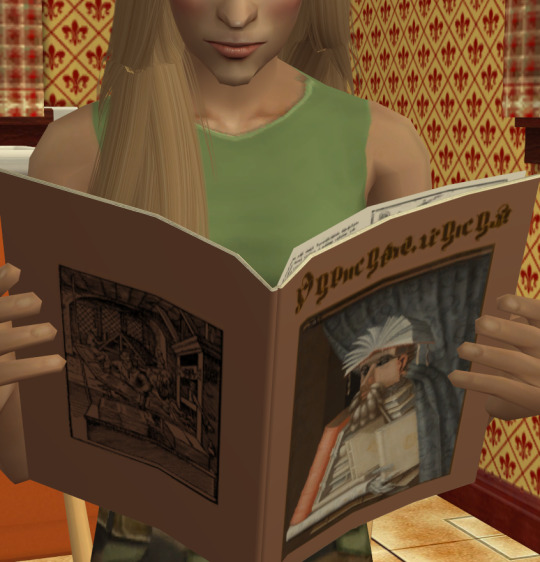
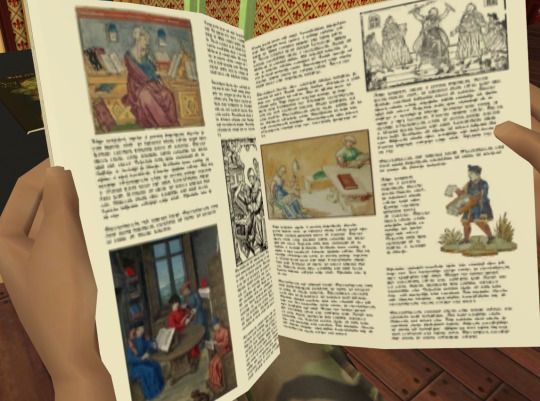
Film and Lit uses another Arcimboldo painting as the cover and includes an illustration of Isotta Nogarola (who seems to have experienced a 15th-century version of the "a woman with an opinion on Twitter" effect) and a woodcut that's one of the few depictions I've been able to find of a stage play. While most of the magazines have titles taken from actual works of the era on the subject, this one is just called "Bibliophilia."
Nature is titled "Hortus Sanitatis," or "Garden of Health," the title of a popular medieval work that covered herbal medicine and I believe a fair bit more; most of the images I used are from different editions of that work.
Gaming got its title from a modern work about medieval games (which I believe was aimed at reenactors, but right now I'm too tired to check) and the warning about gambling in the catalog description is based on the fact that I could link you to dozens of medieval illustrations of people literally losing their shirts at backgammon or dice games. Here's just one example.
Tinkering is blacksmithing, or metalwork more generally; the illustrations are all taken from the Nuremburg Twelve Brothers Foundation house books, which record all kinds of medieval crafting work; I used metalworkers but I could have easily filled up Arts & Crafts and Cooking with images from the same books, and for that matter, probably Nature too.
Music and Dance, again, takes its title from a medieval/Renaissance work on the subject; I didn't want it to be exclusively musicians so I may have overcorrected a bit towards dance.
I also edited the catalog descriptions that you'll see if you have the magazines in inventory or have a mod that lets you buy them in-store, and threw in an extra, the hidden entertainment magazine, for those curious or in possession of a mod that reenables it.
Download: SFS or Box.
I'm posting this sleep-deprived and groggy, so if I've messed something up, please let me know!
#TS2 default#TS2 historical#TS2 medieval#Sims 2 default#Sims 2 historical#Sims 2 medieval#my creations
6 notes
·
View notes
Note
crops of middle ages? :)
Depends on the country! For ease here I'm gonna assume the UK cause that's my main knowledge base. My best understanding comes from the book The Forme of Cury which is a roughly 14th century cookbook from England. It has a preface from around the 15th century featuring some interesting information about Early British food.
"The Aborigines of Britain, to come nearer home, could have no great expertness in Cookery, as they had no oil, and we hear nothing of their butter [...] There was little corn in the interior part of the island, but they lived on milk and flesh"
The cookbook itself mentions a lot of imports: wine (from France and Greece), rice (from "abroad"), saffron (Egypt), sugar (Caribbean via Venice), olives (France) and "whole spices" ("abroad" via Venice.) Spices named include: cinnamon, nutmeg, garlic, galangal, pepper, ginger, cubeb, cardamon, and caraway.
England's own native crops include barley, wheat, oats, and rye. Being a fairly cold country (especially during the ice age the Middle Ages was experiencing) England mainly relied on imports for food. In their homes many medieval people would grow cabbages, onions, peas and beans. But most food reliance was on meat, bread, and dairy.
2 notes
·
View notes
Text

Ancient Mesopotamian Recipes ("judge's morsels")
Loukoumades (لُقْمَةُ ٱلْقَاضِيِ)
This dough is made with flour, sugar, yeast, and lemon zest. The loukoumades are drizzled with melted chocolate, covered in cinnamon and honey, and sprinkled with pistachios.
The recipe for Luqmat al-Qadi, yeast-leavened dough boiled in oil and doused in honey or sugar syrup with rosewater, dates back to at least the early medieval period and the 13th-century Abbasid Caliphate, where it is mentioned in several of the existent cookery books of the time. It is also mentioned in One Thousand and One Nights, in the story The Porter and the Three Ladies of Baghdad.
#Loukoumades#dough#sweets#Rosh Hashanah#recipes#لُقْمَةُ ٱلْقَاضِيِ#luqmat al-qādi#food#mesopotamia#iraqi#treats#jewish life
3 notes
·
View notes
Note
here are some of the books we had to read in secondary school to add to your reading list if you wanna include some non-american canon: - vanity fair - william makepeace thackeray (social satire) - jamaica inn - daphne du maurier (smuggler thriller/murder mystery) - the interesting narrative of the life of olaudah equiano - olaudah equiano (ex-slave autobiographical novel) - all quiet on the western front - erich maria remarque (semi-autobiographical great war novel) - the forme of cury (this is literally just a cookery book from the 1300s but i remember being fascinated by it) - the canterbury tales - chaucer (social satire of medieval pilgrims) - silas marner - george eliot (miserly hoarder becomes a Better Man) - north and south - elizabeth gaskell (social novel, tradition vs modernity) - far from the madding crowd - thomas hardy (basically just a love story really) - small island - andrea levy (racism in 1940s britain) - richard ii - shakesy (a king un-kings himself after having a breakdown on a welsh beach because his boyfriend got beheaded) (i KNOW you said you wanted to read more, BUT if you don't like reading plays by yourself, i highly recommend watching the 2012 adaptation directed by rupert goold because it's got a lovely rhythm to it that really emphasises the fact the play is written entirely in verse and contains no prose) - oranges are not the only fruit - jeanette winterson (lesbian girl in a very religious community) - the tenant of wildfell hall - anne bronte (female artist falls foul of gossip and scandal)
this is so funny i've read a bunch of these aflakdsjf thank you!! padding out my list... obsessed with the 1300s cookbook???
4 notes
·
View notes